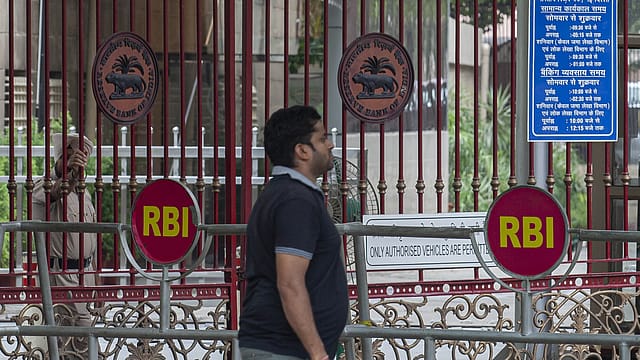Rate cuts in India are now off the table: Morgan Stanley
ADVERTISEMENT

Morgan Stanley expects the key policy rate in India to remain steady at 6.5% with no easing in its forecast horizon.
This update is driven by a change in the U.S. Fed rate path and domestically strong growth, both warranting higher neutral real rates, the research firm says.
The confluence of both global and domestic factors warrants the RBI staying put, says Morgan Stanley. "We now expect the policy rate to remain steady at 6.5%, vs. our previous view of a shallow rate cut cycle from 3Q24, implying that real rates track at 200bps (similar to the average real rates of 190bps during 2003-2007)," it says.
Economists at Morgan Stanley believe the current expansion in the Indian economy resembles the booming 2003-07 period when GDP (gross domestic product) growth averaged 8.6%.
India's GDP grew 8.4% year-on-year in the quarter ended December 31, 2023, much higher than the Reserve Bank of India (RBI) monetary policy committee's forecast of 6.5%.
GDP has continued to surprise on the upside for four consecutive quarters, suggesting inherent strength in the economy, as a result of which growth has galloped above expectations, says Morgan Stanley.
A strong growth trend domestically, driven by capex and productivity, implies that rates could be higher for longer, according to Morgan Stanley.
January 2026
Netflix, which has been in India for a decade, has successfully struck a balance between high-class premium content and pricing that attracts a range of customers. Find out how the U.S. streaming giant evolved in India, plus an exclusive interview with CEO Ted Sarandos. Also read about the Best Investments for 2026, and how rising growth and easing inflation will come in handy for finance minister Nirmala Sitharaman as she prepares Budget 2026.
“The growth trend has been surprising on the upside over the last four quarters, with sustained momentum in capex and industrial activity. Further, leverage pickup is accelerating, as reflected in higher credit growth tracking at a robust 16.3% in March 2024 vs. pre-pandemic growth of 7.1% YoY. We believe that the current cycle is similar to the 2003-07 cycle with pickup in capex and productivity,” it says.
“While we expect India’s domestic growth to remain robust and macro stability to remain benign (discussed in the following sections), a higher terminal Fed Funds rates does expose the economy to some degree of external risks,” it says, adding that the strength in the U.S. dollar could weigh on the Indian currency and increase risks of imported inflation, warranting a cautious stance from the RBI.
Morgan Stanley expects the capex recovery to become broad-based with private capex to lead the next leg of recovery. Anecdotal evidence suggests nascent signs of a pickup in corporate capex, reflecting new investment announcements made recently, with approval for three semiconductor chip manufacturing plants entailing an investment of $15 billion and the new approved EV policy that could trigger investments in electric vehicles, it says.
Morgan Stanley expects India’s GDP growth to normalise to 6.8% in FY25 and 6.5% in FY26. It also expects retail inflation to average at 4.5% in FY25. While food inflation remains sticky and imparts volatility to the overall headline print, core inflation continues to moderate and is even tracking below the 4% mark, aided by broad-based softening across core goods and core services inflation, it says.
